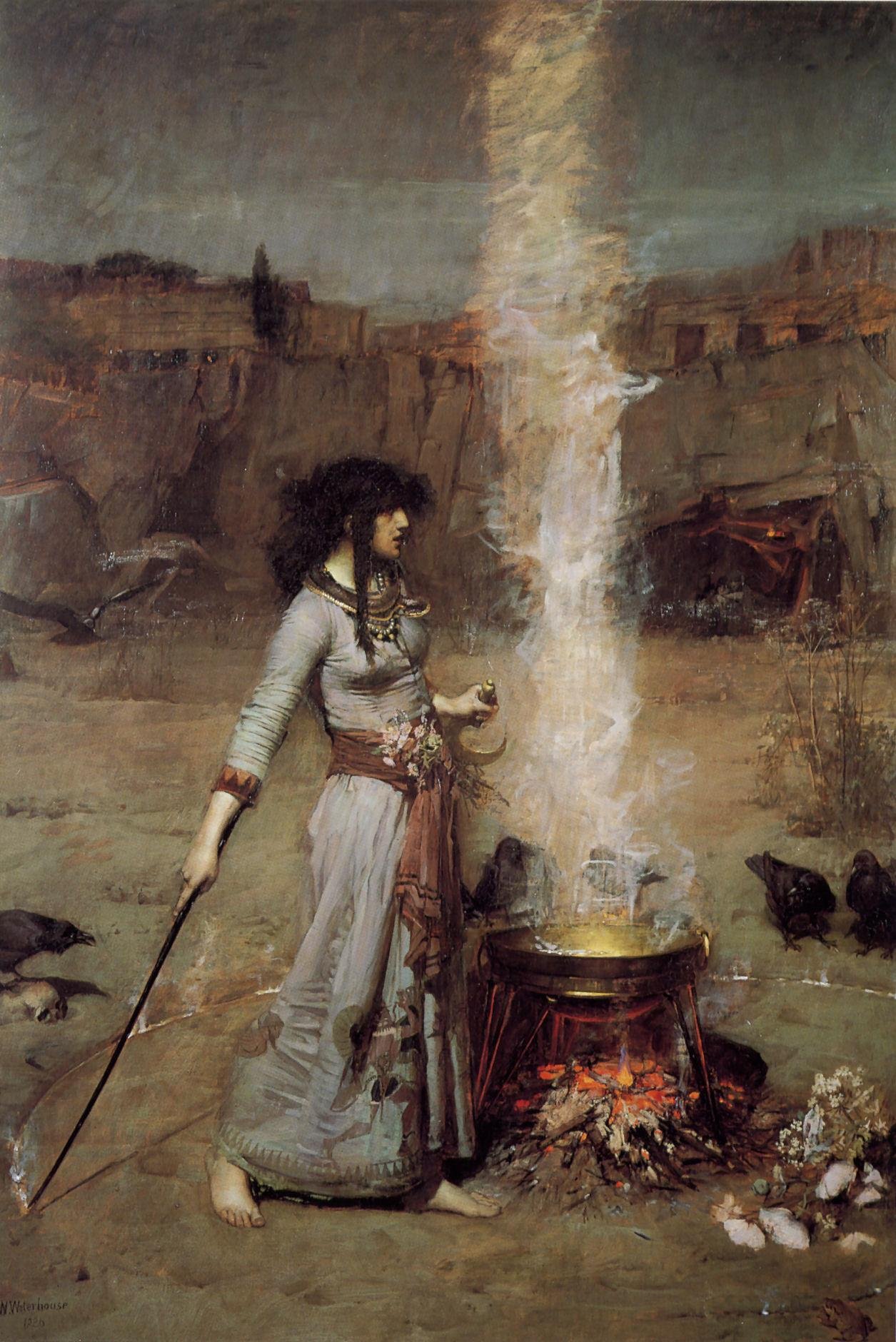
About
The Alchemical Process
Painting By John William Waterhouse
Whether I’m guiding you in an individual session or within a group dynamic, our work is collaborative and co-creative. I hold space as an initiator and guide. Together, we weave in the right medicines that allow you to experience the alchemization of healing and metamorphosis that aligns with your system, unique blueprint, and genius. All of this is to embody a deeper and expanded sense of Self and a more profound appreciation for the collective human experience.
Look below to explore the modalities and approaches that are part of the apothecary.
Cognitive Psychology
Cognitive psychology is a “top-down” approach to building awareness, which is explored by bringing curiosity to thoughts, beliefs, emotions, and behaviours as they occur in everyday situations and interactions.
I aim to guide you in learning the skill of noting and naming your experiences and coming to know how these may be helpful or unhelpful.
More often, the pain we experience points to long-standing, even ancient patterns, schemas and complexes - personal and cultural - that have little usefulness or relevance for our present and future lives.
Dismantling and reorganising these complexes of thoughts, beliefs, emotions, sensations, urges and behaviour and turning toward what holds more significant value and meaning are core to creating change.
Body-centred Psychology
Somatic-based approaches to therapy and healing are “bottom-up”. This means awareness and insight are gained by contacting, sensing, and tracking what is happening in the body as you move about your life, interact with others, or encounter difficulty and pain.
It is based on the notion that your body is a doorway between the conscious and unconscious and may hold information and “memories” that the rational and intellectual mind has difficulty making sense of.
Integrating body-centred approaches helps to build a deeper relationship to your body, to learn its language, and to know how to respond to its messages in posture, gesture and movement. Body awareness and somatic practices are the most direct ways to establish nervous system health, a sense of vitality, and empowerment.
I have completed Level 1 & 2 training in Sensorimotor Psychotherapy, multiple trainings in Hakomi, Mind-Body Centering, and am a yoga teacher and practitioner with a decades-long personal and daily practice.
Depth, Archetypal & Transpersonal Psychology
Beyond the ‘knowable’ and the rational mind, there’s a world of the intuitive, symbolic and imaginal. Here’s where you bridge the gap between the personal and collective conscious and unconscious - re-learning how to see the world through mythic imagination and explore inner life through body, symbols, synchronicities, dreams, shadows, myths and stories.
Ancestral work, cosmology, enactment, ritual, and magic are par for the course here.
I have trained in person with Dr Clarissa Pinkola-Estes and undergone my own psychoanalysis. I’ve completed multiple dreamwork, myth and fairytale workshops/trainings, and I continue to study and read widely into Jungian, Depth and Archetypal psychology, and Narrative and Transpersonal approaches.
Neuroscience
The work of the psyche-soul cannot be reduced to our neural functioning. However, advances and explorations in neuroscience have enhanced our understanding of the mind-body connection rather than diminished it, deepening our understanding of consciousness, emotions, language, decision-making, memory, attachment, and relationships.
Neuroscience helps frame how change is facilitated through memory reconsolidation and neuroplasticity - when we heal and transform, our brain changes - new connections are made, messy knots and bundles are disentangled, and even disintegrate.
It also helps us understand how our nervous system responds to trauma, stress, panic, rage and depression (“fight/flight/freeze/fawn”) and connection and care (bonding and resonance via ventral vagal engagement). This helps support a behavioural and body-centred approach for healing frayed nervous systems and building relational bonds.
Deep Brain Reorienting
Deep Brain Reorienting (DBR) is a highly specialized, body-centred process for working with trauma. We work precisely with the neuroanatomy of the brainstem to clear hypervigilance and shock and re-establish a healthy orienting response.
This allows trauma responses that may have felt “stuck” to clear, so healthy orienting and attending to your environment is re-established, and a natural flow of responsiveness can occur. This is opposed to unconscious and conscious hypervigilance and reactivity to environmental and relational cues.
I’ve completed Levels 1, 2 and 3 training in DBR with Dr Frank Corrigan.

Whether you choose to work with me one-on-one, in group workshops, or courses, I practice using all these elements - like true alchemy - in differing amounts, with focus and emphasis depending on need, context, and desire.
Let’s connect.
Are you curious about working together but unsure where you fit or what option would be best for you? Send me your information and questions, and we can explore the work together.
















